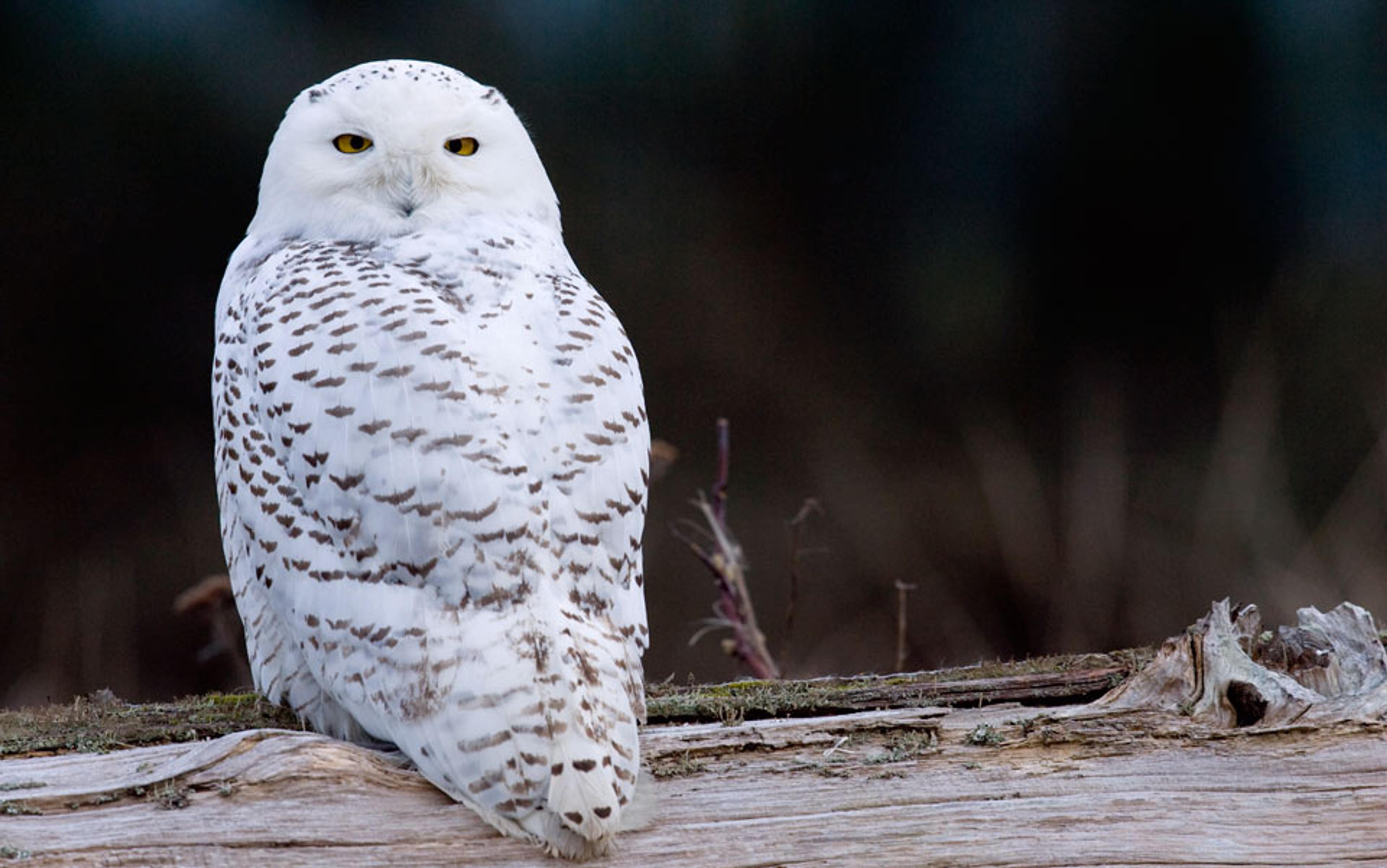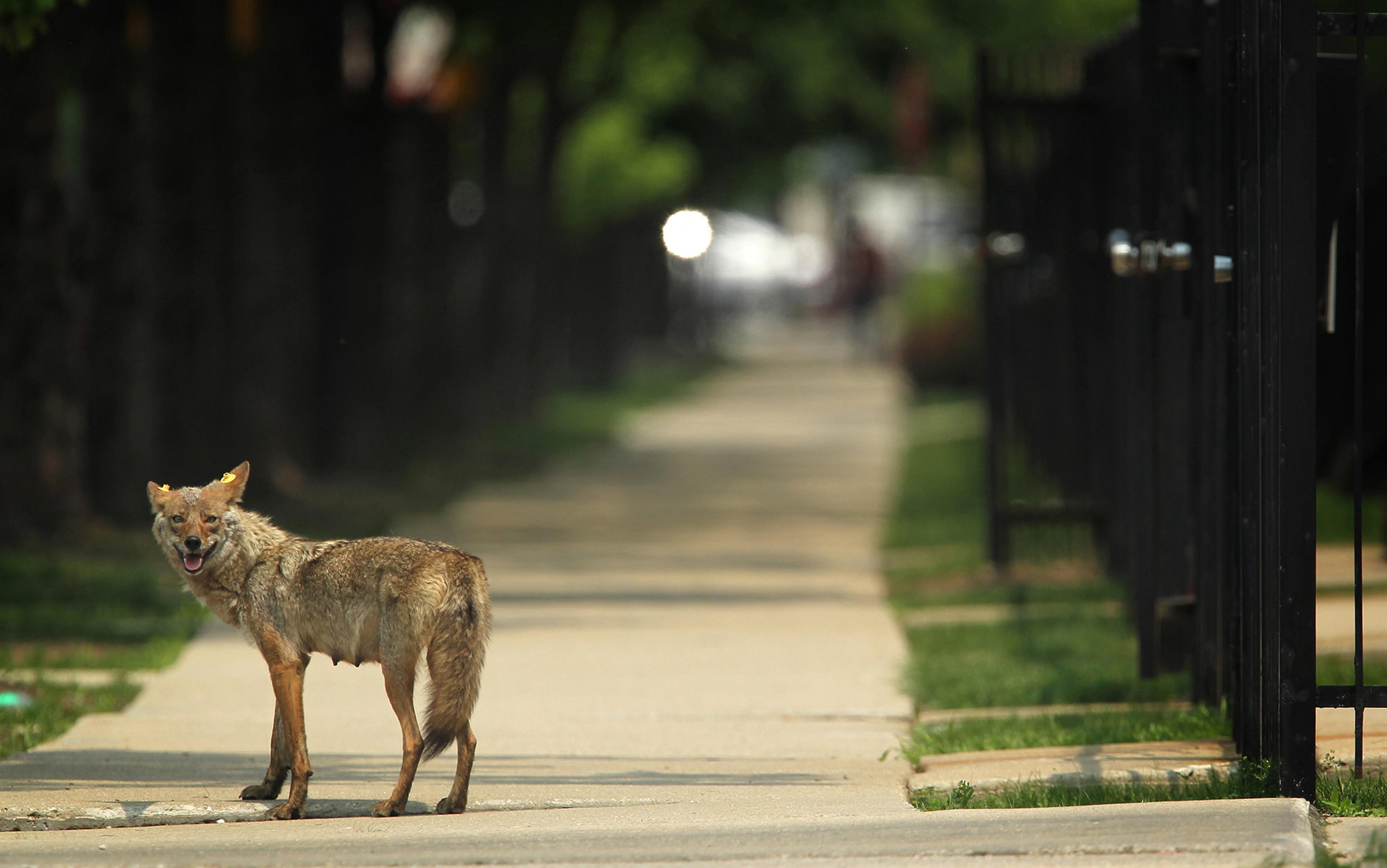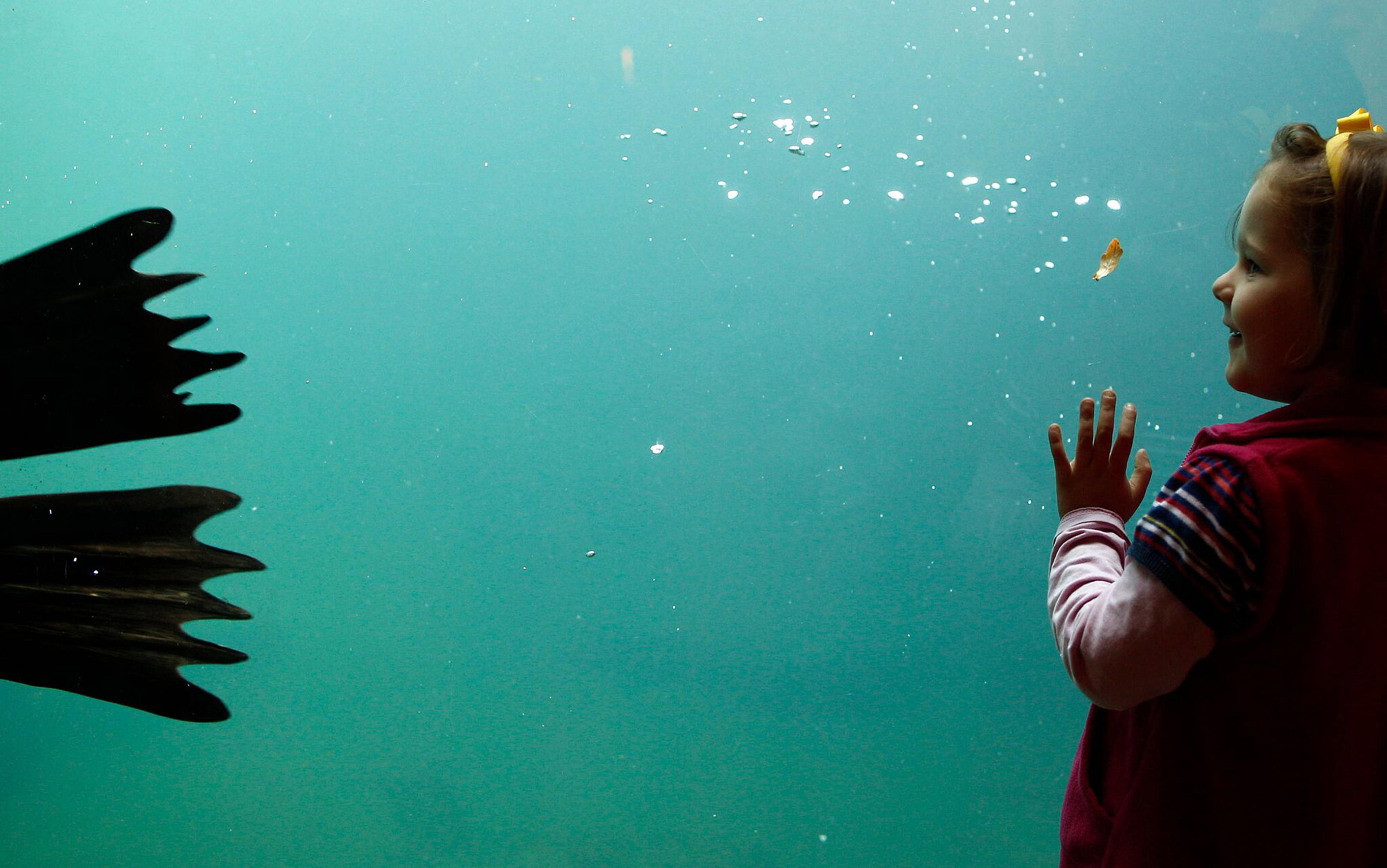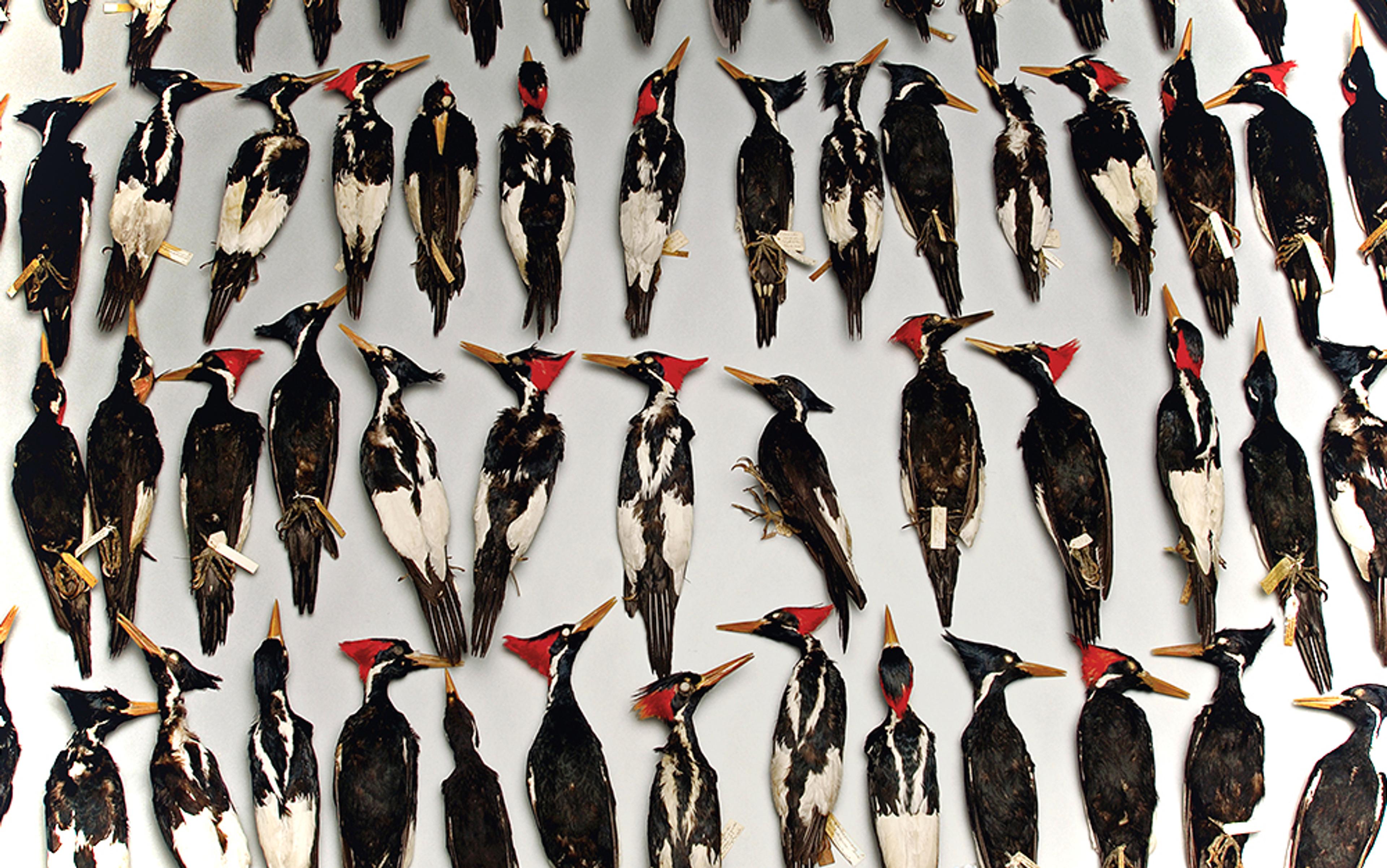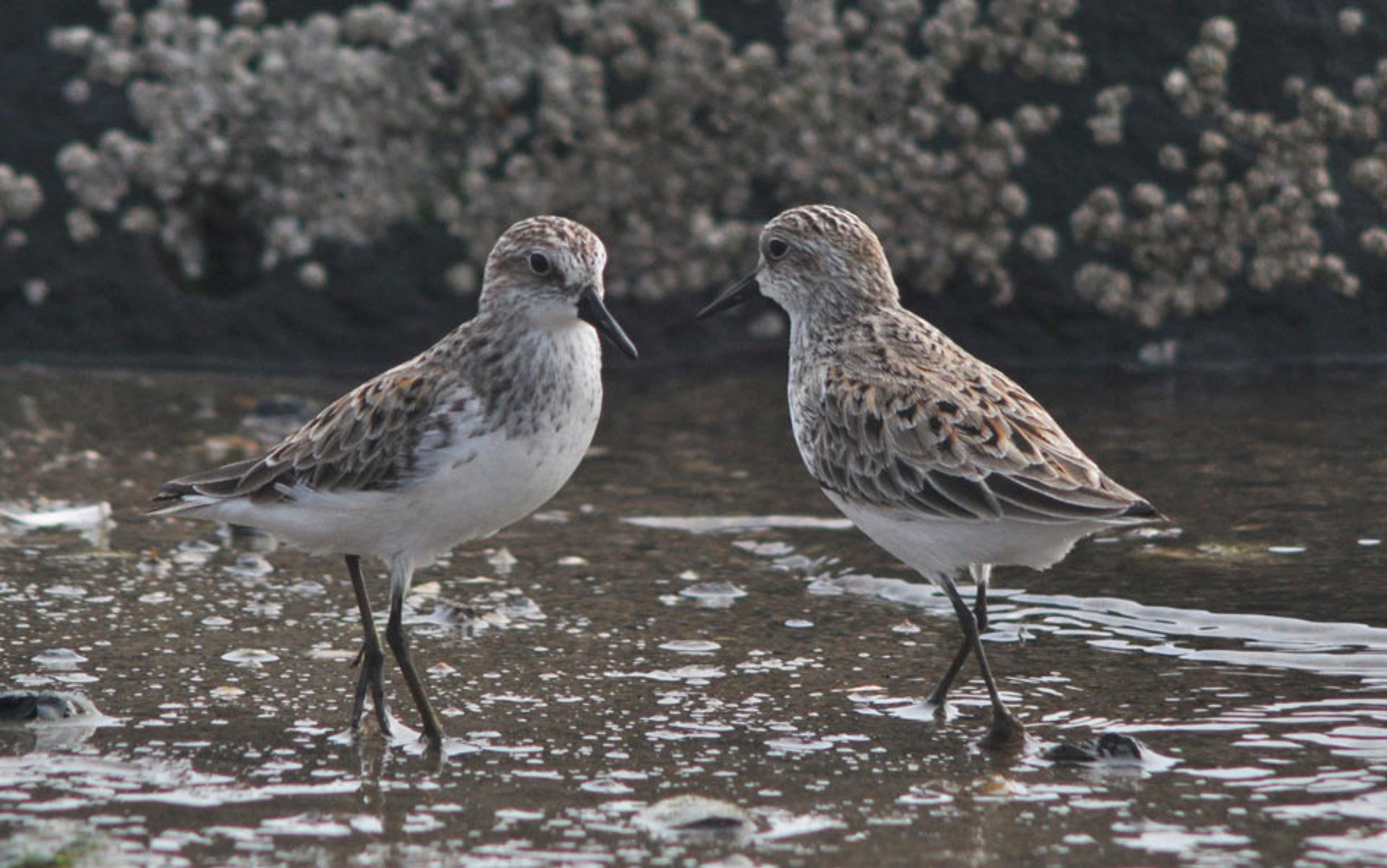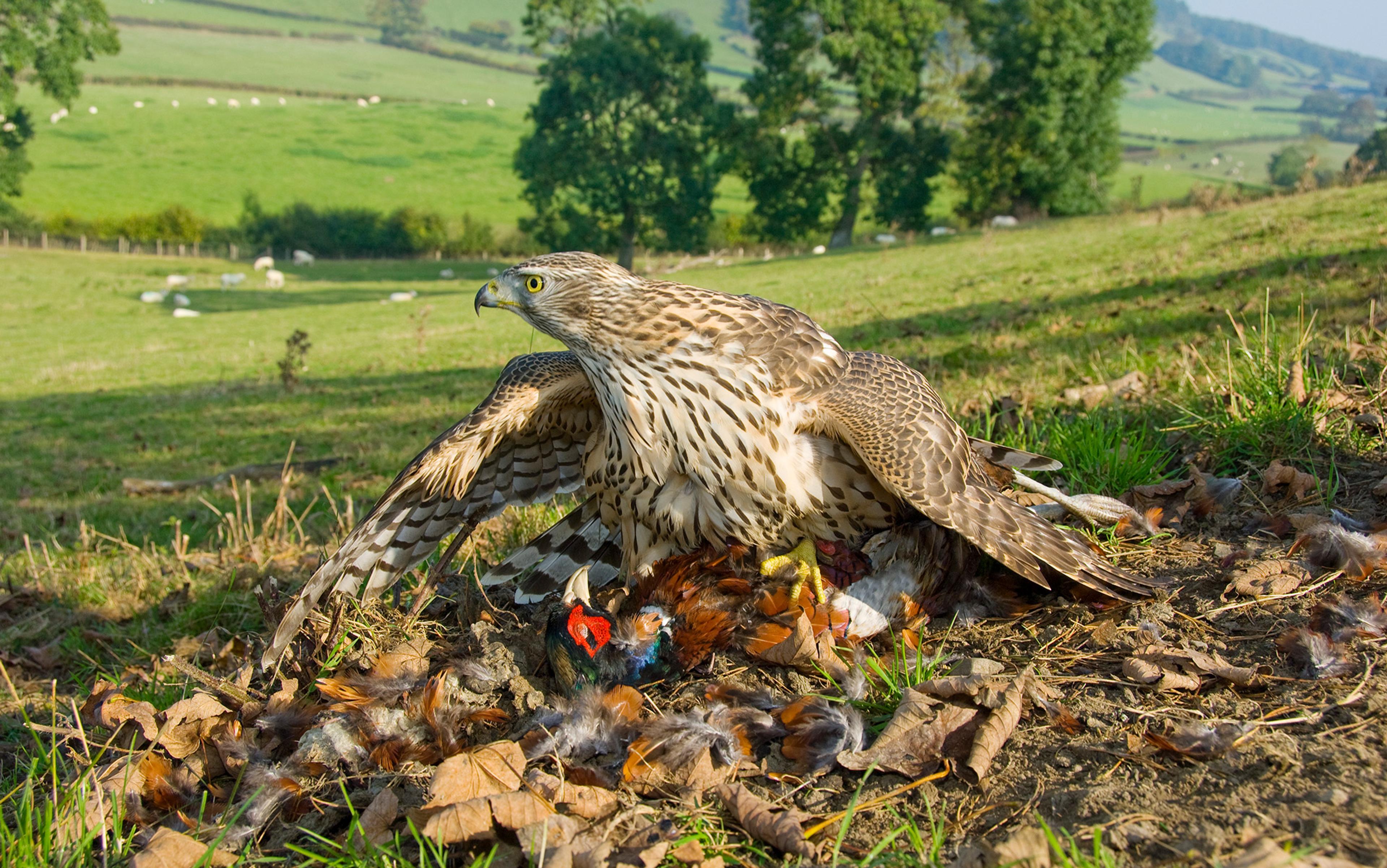Perched on a rocky point along the Maine coast, the snowy owl is languid, a predator without country or concern. The wind and the sleet don’t matter. Crashing waves don’t matter. You don’t matter either. The snowy owl doesn’t care that you’ve driven halfway across winter to see a bird on a rock. The snowy owl doesn’t even know you exist.
So you peer through binoculars and watery eyes at a creature from a place painfully colder than Maine or Ohio or Minnesota, or anywhere else in the US that these Arctic owls are showing up in huge numbers this winter. As it rests, or naps, the owl ignores its role in the Harry Potter legend or even in the drama of a warming planet. Then you cough or curse the wind chill, and the owl spins its head your way.
From a snowy owl’s eyes, the Arctic speaks.
Lemon-yellow laser beams emerge from fluffy white surrounds. They have a hypnotic and seductive force of their own, like bioluminescence or romance. You cannot turn away your gaze because the eyes bring some sort of ancient thrill to your blood and bones. You make eye contact in a way you’ve made with no human being. Vulnerability and inhibition do not exist.
Yet from this owl there is no reciprocity. The snowy owl is not like you or me. Its eyes evoke wild places you can only imagine: open tundra where trees can’t exist, where the sun might never rise or never set, where arctic foxes prey on young owls, where butterflies flicker like blue and orange flames among lichens and heather and rock, where the land is so wide that the earth seems to curve at the horizon, and where the snowy owl has never seen the likes of you.
The owl has no interest in killing and eating you. And even if it suspects that you yourself might want to kill and eat it, the owl decides that you are, for the time being, standing at a safe distance. So it is done with you. And in that fraction of a second before it turns away, to whatever desires brought it here, before it makes you feel like a lover scorned, the snowy owl’s eyes say: ‘Go about your business, go lead your quiet life. I’ve got mice and voles to kill here.’
The snowy owl breeds in some of the coldest lands on earth, a circumpolar zone that reaches across northern portions of Siberia, Greenland, Alaska and Canada. Most winters, snowy owls don’t get much farther south than their breeding grounds. Not this winter. In these shortest days of the year, the white owls of daylight have descended on the Northeast and Great Lakes and beyond in what appear to be record numbers. We’re finding them at lighthouses on the Maine coast, in the marshes of the Jersey Meadowlands, at airports in Vermont, on the waterfront in Cleveland, on the Lake Superior shoreline in Duluth, even on a rooftop in Bermuda. For bundled-up (or bathing-suited) birdwatchers, the snowy owl invasion is among this winter’s great natural events.
Many people ask me why the owls have come, whether they are here because something’s gone wrong in the Arctic. Birdwatchers worry that snowy owls are showing up emaciated and in distress. Environmentalists make points about climate upheaval. As it turns out, besides their high numbers, there is nothing at all unusual or troubling about the owls visiting us this winter – at least not that we’ve yet discovered. What’s troubling is the opportunity we’re missing in the eyes of these owls.
Snowy owls, like some other predators, display a cyclical population pattern linked to the abundance of their prey – lemmings and other small mammals. Prey availability also drives owl movements. Conventional wisdom holds that when lemmings undergo a population crash, snowy owls move south in search of replacement rodents. These owl ‘irruptions’ happen every few years or so. But snowy owls also move south during periods of lemming abundance in the far north. Lots of small mammals on Arctic breeding grounds means more fledgling owls have the food necessary to survive their more perilous first few months out of the nest before winter. By November, particularly if the lemmings then happen to crash or the adults claim better feeding areas, the surviving youngsters wander south. At least that’s the hypothesis – a good one. A large proportion of the owls visiting the US are indeed immature birds on their first journey.
Owls, like humans, are nothing if not ruthless opportunists
Many of these owls wander to shorelines along lakes or oceans. Snowy owls most certainly prefer meals of small land mammals, which they hear beneath the snowpack or sight with unimaginable acuity before dispatching them with sharp talons and then swallowing them headfirst. But they also take what’s locally abundant, including ducks, alcids and fish snatched from the water’s surface. Owls, like humans, are nothing if not ruthless opportunists.
Yet I fear an opportunity lost. The snowy owl is this winter’s wildlife celebrity. News of the owl invasion, including maps of snowy owl locations, has afforded many Americans face-to-face encounters with these Arctic emissaries. In the news accounts, on blogs and in tweets, we too often get little more than references to Harry Potter’s owl Hedwig (whose star power triggered a surge in demand among kids for pet owls). We are reminded that White Owl brand cigars burnish their packaging with a snowy owl. We watch videos of these owls and then wander off across the cluttered landscape of the glowing screen toward the next amusement. Sure, that’s us, a besotted and distracted lot, knowing too little about wildlife, which we too often use to sell us myths or crap we don’t need.
Missing from this snowy owl winter is some humility on our part – nothing less than a deeper understanding of the rest of the planet. Rather than belonging to a boy wizard or a cheap smoke, snowy owls are messengers from a real place that most of us will never visit. To be sure, in one view, the big Earth is now smaller and more accessible. From the comfort of our screens, we can navigate the rocky slopes of Ben Nevis, lumber among elephants across the Serengeti or float the Colorado River beneath the Grand Canyon’s pastel walls. How odd it is that now, during the planet’s latest age of mass extinction, we have a new age of mass experience. Yet the cinematic is no substitute for the real thing. Few of us will actually witness a pod of beluga whales surfacing in frigid Arctic waters or caribou migrating across expansive tundra. Polar bears will not wander south to visit us this or any other winter. Snowy owls have come instead.
From other wild places we will receive no such messengers. Rolling, tallgrass prairies, which once made the American Great Plains great for ornate wildflowers and for grasses as tall as you, have vanished beneath the plow and pavement. From the scattered patches that remain, bison will never leave to visit the Rust Belt. The prairie’s regal fritillary butterfly, chestnut and peach with glowing silver spots – an animal so pleasing that when you see it taking nectar from a purple coneflower you might decide to quit your job, sell your home and become a lepidopterist – will never depart its dwindling parcels to visit the subdivisions and strip malls that cover former habitat across the eastern US.
No ornate butterfly fish, flashing yellow like a snowy owl’s eyes, will swim to the Midwest to remind us of the warehouses of biodiversity we’re losing from coral reefs
Coral reefs, once a source of fishing abundance for millions of people around the globe, are now terminally ill ecosystems – all but dead, victims of overfishing, pollution and ocean acidification. No waving arm of coral from the Great Barrier Reef will visit the Northeast this winter. No ornate butterfly fish, flashing yellow like a snowy owl’s eyes, will swim to the Midwest to remind us of the warehouses of biodiversity we’re losing from coral reefs.
Perhaps the snowy owl can stand in for those other earth- and water-bound emissaries. Whether watching them through binoculars or on the glowing screen, we might see, in the glow of an owl’s eyes, more of the world – from the Highlands to the Serengeti, from arctic to ocean. Or at least we might find humility.
More than a century ago, Aldo Leopold found his humility in another predator. In his formative years as a forest ranger, the great conservationist and philosopher rarely passed up the opportunity to shoot a wolf. On one particular outing, after ‘pumping lead’ into a wolf pack from a vantage on rimrock in the American Southwest, Leopold descended toward the prey.
‘We reached the old wolf in time to watch a fierce green fire dying in her eyes,’ he wrote in a classic essay on wildlife conservation, ‘Thinking Like a Mountain’, in which he pointed out how our widespread extirpation of wolves caused a surge in deer populations, which in turn over-browsed plant communities and made mountains destitute. ‘I realised then, and have known ever since, that there was something new to me in those eyes – something known only to her and to the mountain.’
Leopold and his wolf, the snowy owls and us – at the dawn of the day, we are all killers. Yet we are killers with a troubling difference. Owls consume mammals in harmony with their environments. We mammals consume environments into a state of disharmony.
The owls now visiting will not likely change our habits – or our shared fate. But perhaps in the eyes of a predator we can find ourselves thinking more like a mountain or a prairie, the ocean or the Arctic – not in the green fire dying, but in the yellow fire still burning.
